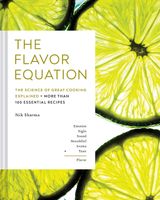Caramelization
By Nik Sharma
Published 2020
When sugar is heated, the crystals lose their structure and turn into a liquid that, on continued heating, starts to decompose and turn brown. This is caramelization, and depending on how long you heat it, you can produce different degrees of the brown caramel color and its characteristic bittersweet taste. When table sugar or sucrose is heated, it first splits into its two constituents, glucose and fructose (Hot Honeycomb Candy), which go on to form three brown molecules—caramelins, caramelens, and caramelans—and a complex array of flavor molecules that contribute to various tastes: butterscotch (diacetyl), nutty (furan), fruity (ethyl acetate), and toasty (maltol). Caramel is also acidic, because acetic acid, the key ingredient in vinegar, is one of the acids created by the chemical reactions taking place (formic acid is another acid produced).
Part of
Advertisement
Related Recipes
-
-
-
-
Related Reference
-
-
-
-
Advertisement



